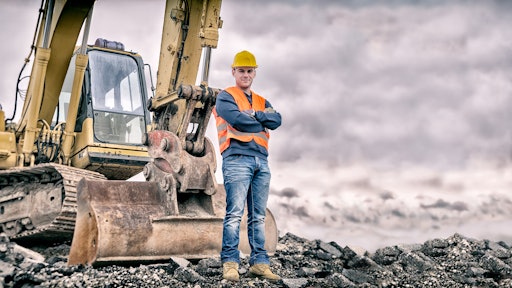
The dust generated in construction zones is more than just annoying for heavy equipment operators, it’s dangerous. Workers who breathe in toxic particles are at an increased risk of respiratory ailments including lung cancer and other related diseases that can lead to disability and death. While it might seem intuitive that machine operators in cabs are protected from dangerous jobsite particles, this is true only if the operator enclosure is fitted with a complete cab air quality system that creates and maintains clean air.
OSHA regulations focus on silica
According to the Occupational Safety and Health Administration (OSHA), approximately 2.3 million people in the U.S. are exposed to silica at work and workers who breathe in the tiny crystalline silica particles are at an increased risk of developing serious silica-related diseases, including silicosis (an incurable lung disease that can lead to disability and death), lung cancer, chronic obstructive pulmonary disease (COPD) and kidney disease.
Construction workers may be exposed to crystalline silica dust particles when drilling, sawing or crushing concrete, rock, brick or mortar. While personal protective equipment like masks and wearable respirators help workers not in machine cabs, the operators who work from enclosed cabs of bulldozers, loaders and haul trucks may also be exposed to crystalline silica dust particles.
Crystalline silica is a common mineral found in the earth's crust and construction-related materials like sand, stone, concrete and mortar contain crystalline silica. Breathable or “respirable” crystalline silica particles are tiny and measure less than 10 microns in length. (A micron is equal to one millionth of a meter.) To put this into perspective, the average width of a human hair is 50 microns and anything smaller than 40 microns is invisible to the human eye.
How do complete cab air quality systems help?
To provide cleaner and safer air to equipment operators, it’s important for heavy equipment fleet owners to specify new machines with a complete factory-installed cab air quality system. A complete system includes three parts: a fresh-air unit that includes a powered precleaner, a recirculating-air unit with high-efficiency filtration and a cabin-pressure monitor. Equipment owners with existing machines should test and assess their equipment in real-world working conditions to determine baseline performances. If the equipment does not meet the requirements for providing operators with clean air throughout the work day, owners or equipment managers can retrofit machines with a readily available and complete three-part aftermarket cab air quality system.
Many manufacturers offer clean air products for operator enclosures, but the three-part RESPA Cab Air Quality System from Sy-Klone International is the first complete and cost-effective and proven solution for creating and maintaining a cleaner and safer cabin environment.
The last word
Breathing in crystalline silica dust particles and other toxic particles and gases can have harmful and far-reaching effects for heavy equipment operators. Complete cab air quality systems greatly reduce operator risks by removing dangerous particles from outside air before it reaches the cab and continuously filtering the recirculated air inside the operator cabin. The result is an enclosed working environment that’s safer and more healthful for machine operators all shift long.
Information provided by Sy-Klone International.

























